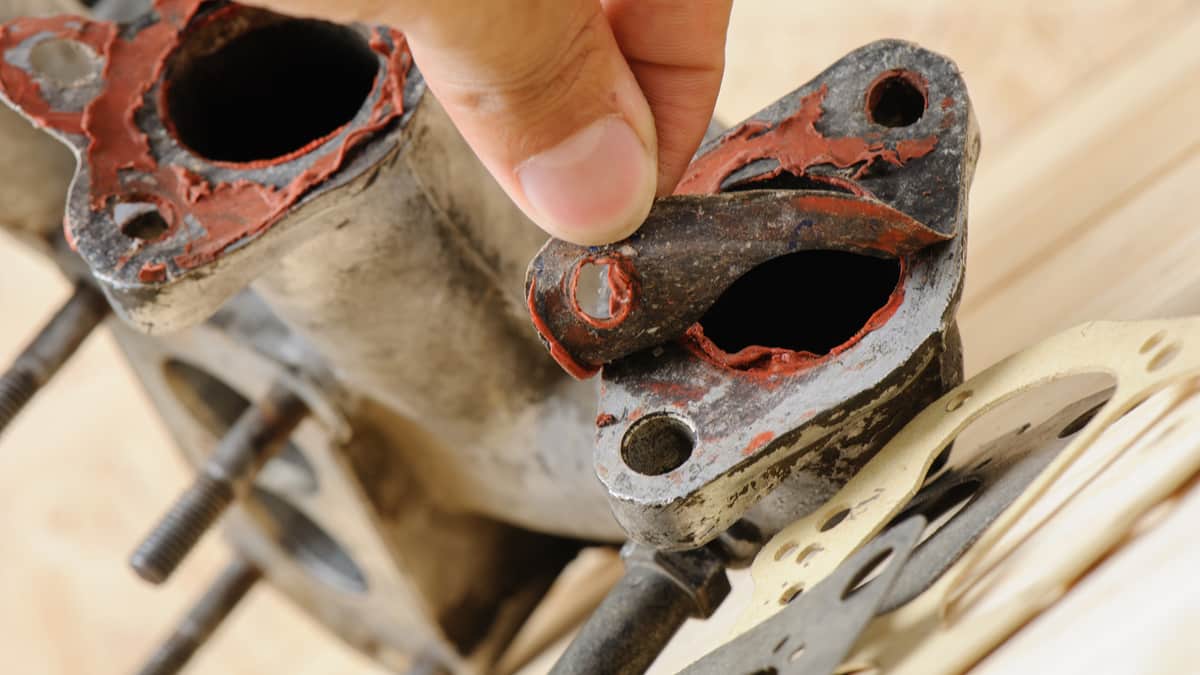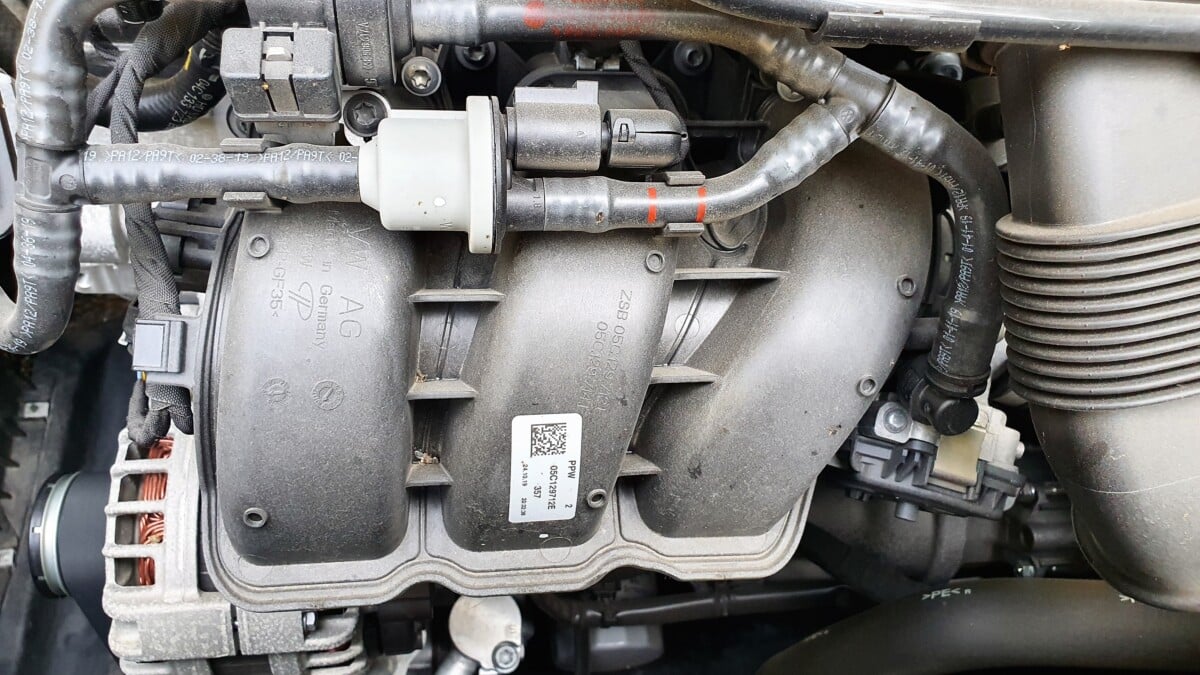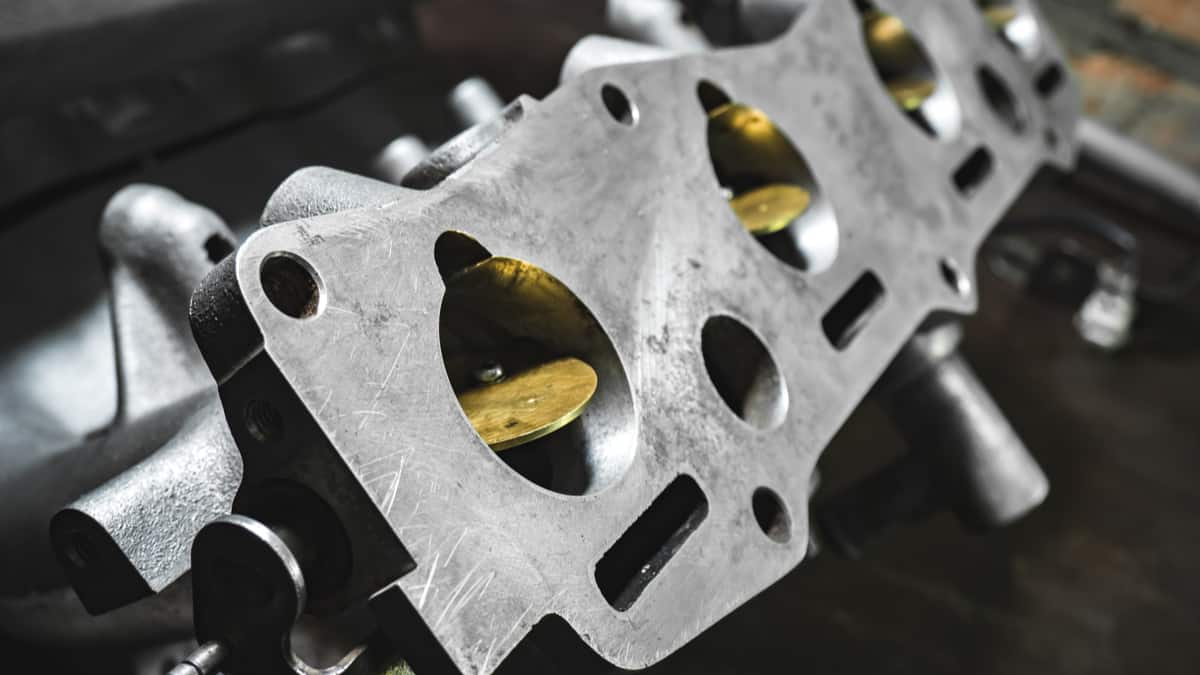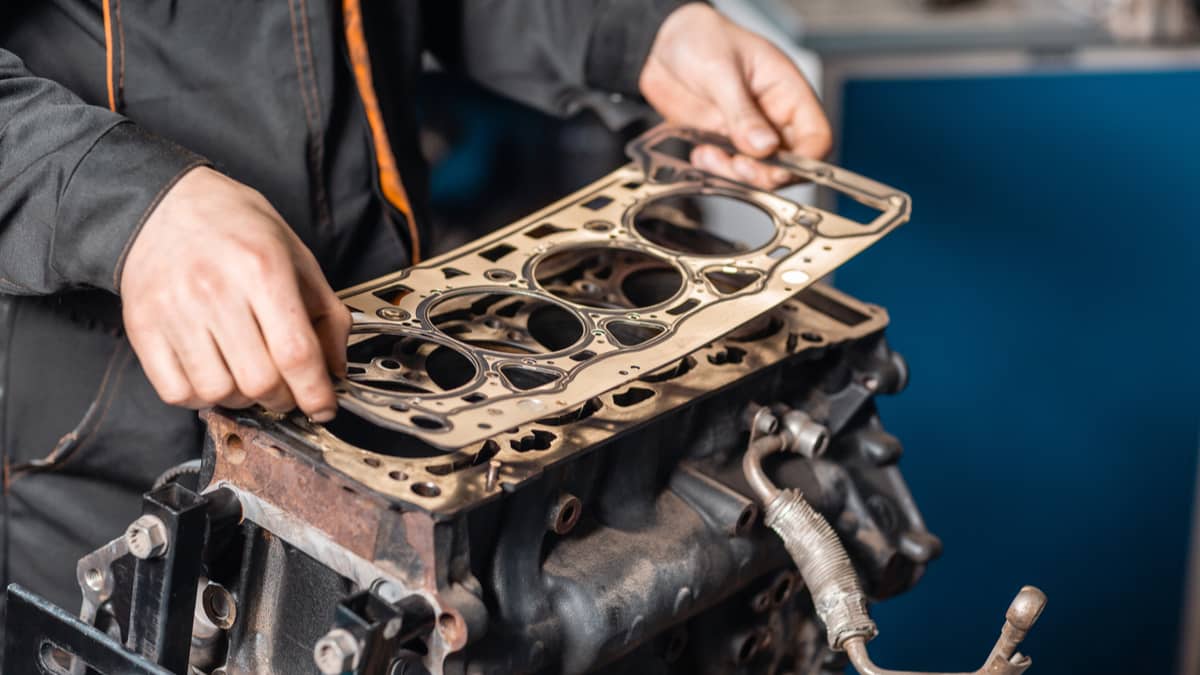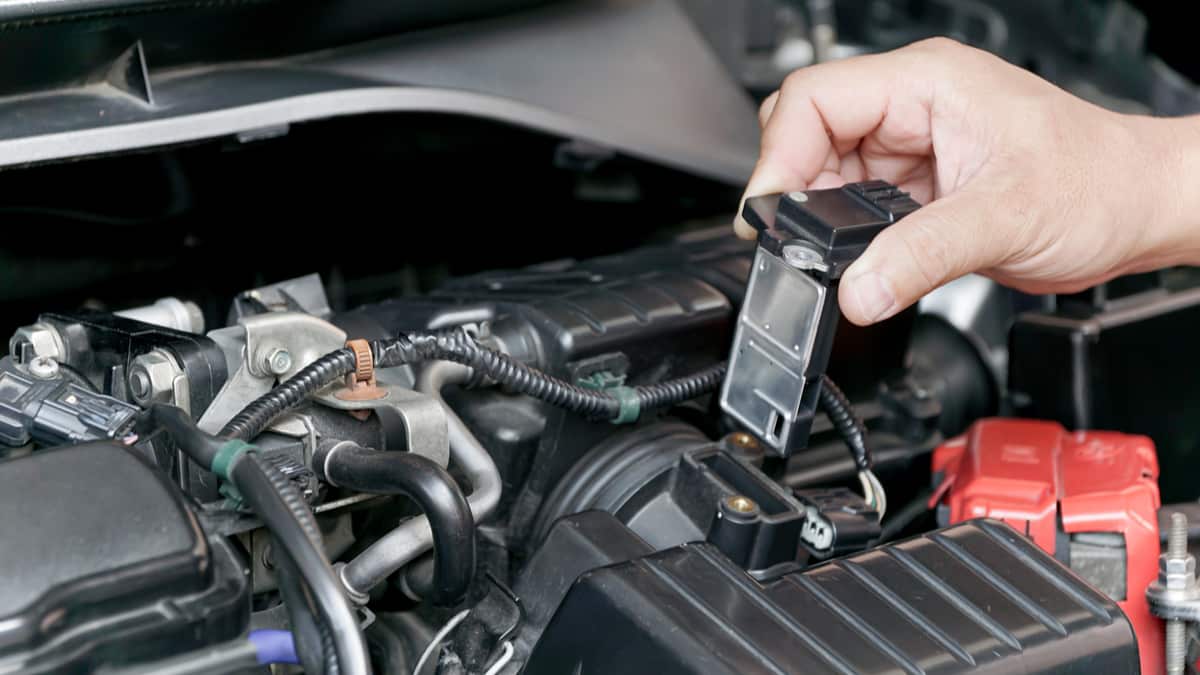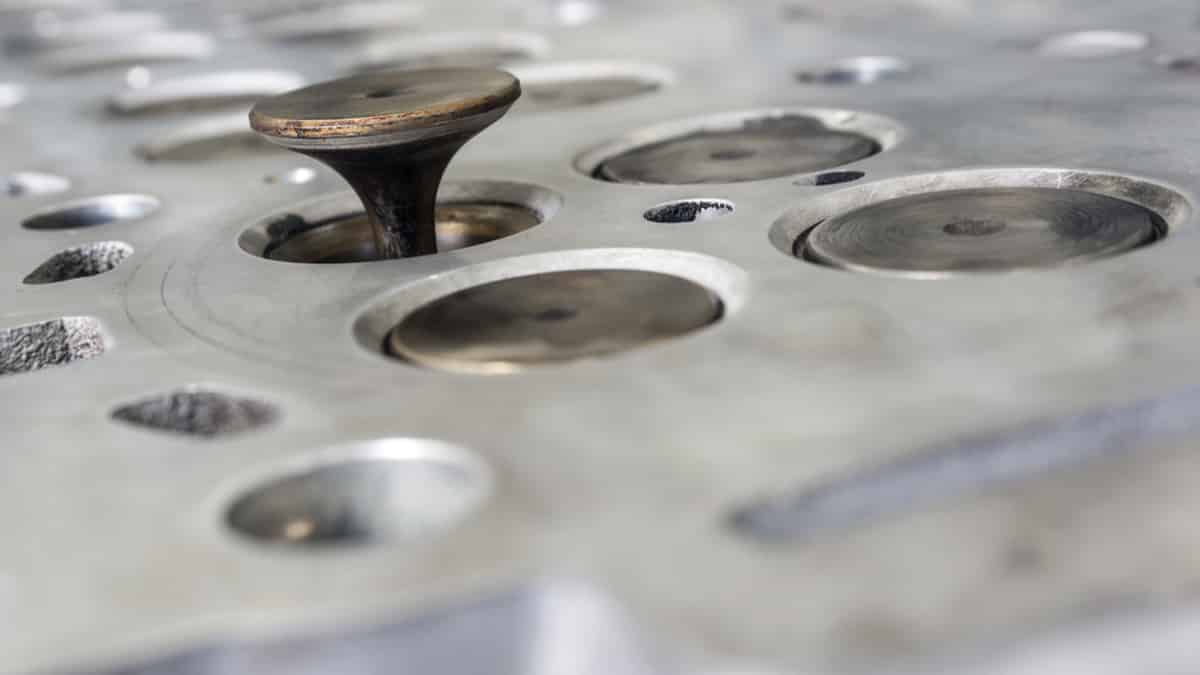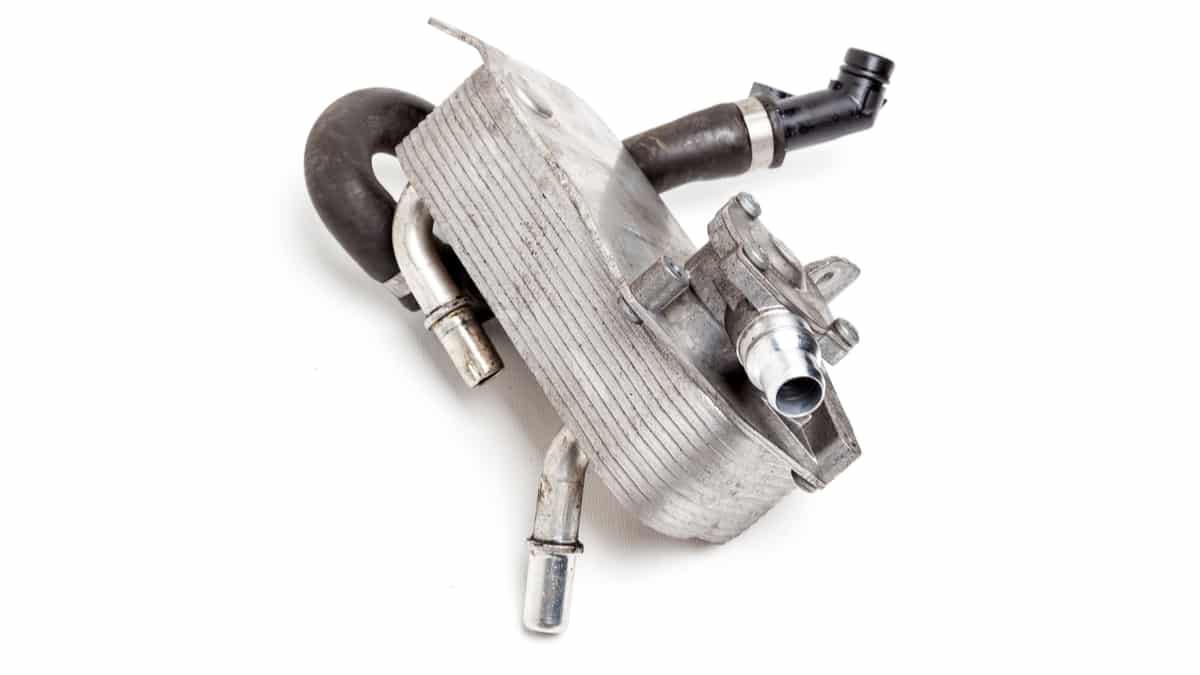Your intake manifold does a ton of work and is a critical part of your engine. While the intake manifold itself is typically pretty sturdy, the gasket seals between the manifold and the cylinder head are known for failing.
But how do you know that you have an intake manifold gasket leak, and what does it mean if you have one? More importantly, how much is it going to cost to fix?
We’ll break down everything you need to know to fix this pesky problem here. Let’s take a quick look at the signs to look for first.
Symptoms Of A Leaking or Bad Intake Manifold Gasket
The most common symptoms of a bad intake manifold gasket are a misfiring engine and white smoke coming from the exhaust. You may also notice external coolant leaks if coolant goes through the manifold. It will also show a check engine light on your dashboard.
Here is a more detailed list of the signs of a leaking intake manifold gasket to look for:
1. Poor Engine Performance & misfires
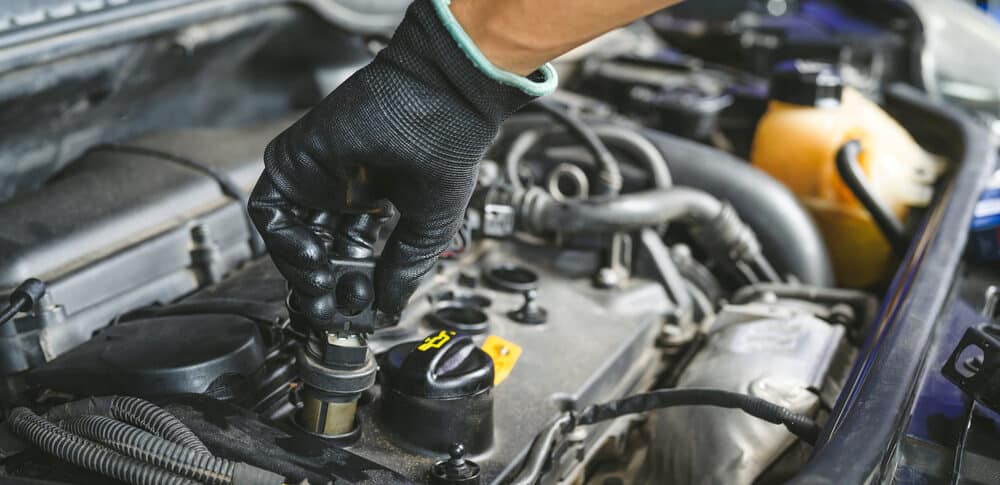
A leaking intake manifold lets air out and coolant in. Both of these things can negatively affect performance. It’s not very likely that you won’t be able to get your vehicle started or that your engine will shut off while running, but you might notice a drop in acceleration and fuel economy.
The biggest concern is that if the coolant mixes with the oil, you’re not only losing the performance of the coolant, but the oil won’t be able to function correctly either. This can lead to excessive wear on a lot of components and cause expensive damages.
You may also find misfire trouble codes in the engine control unit if you check the trouble codes with a scanner.
If the intake leak is very bad, it can fill up the cylinder with coolant, which will make your engine hydro lock, making it impossible to turn over. This is very serious and can cause significant damage to your car. Luckily, it is not very common. Most car engines are designed so that the coolant will pour down into the intake manifold instead.
2. Excessive White Smoke from Exhaust
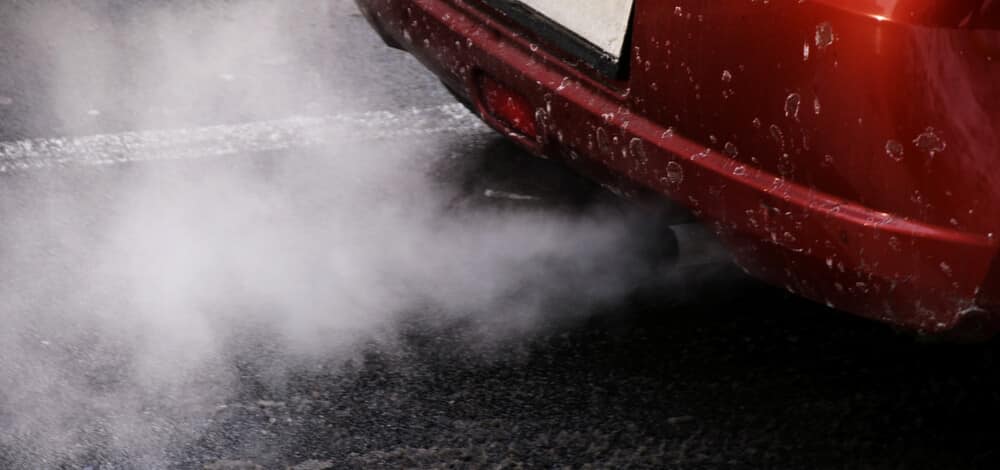
When you’re looking at your intake manifold, you won’t be able to see what’s going on inside unless you tear apart your engine, and at that point, you should be replacing the intake manifold gaskets, whether they were leaking or not.
That’s why it’s essential to know how to troubleshoot this problem without taking anything apart. The easiest way is to start your vehicle and take a look at the exhaust. If there is an excessive amount of white smoke coming out of the exhaust, it’s because your engine is burning coolant.
The only way coolant gets into the combustion chamber is if there is either a leaking head gasket or a leaking intake manifold gasket. Either way, you have a problem. When determining if the amount of white smoke is excessive, keep in mind that you’ll have more smoke during colder weather than you will during warmer weather, and this is completely normal.
3. Coolant In the Oil Pan

One of the most common problems of a leaking intake manifold is that you’ll find coolant in the oil pan. Unfortunately, this is also one of the more serious issues. Not only are you losing out on the cooling properties of the coolant, but you’re also losing out on the lubricating properties of the oil.
When you combine these two problems, you can quickly end up with a vehicle requiring extensive repairs to get back on the road. If you find coolant in the oil pan, make sure you get your vehicle to the repair shop right away. You can easily recognize the coolant in the oil pan because the oil will look milky when you check the dipstick’s oil level.
4. Visible Coolant Leak
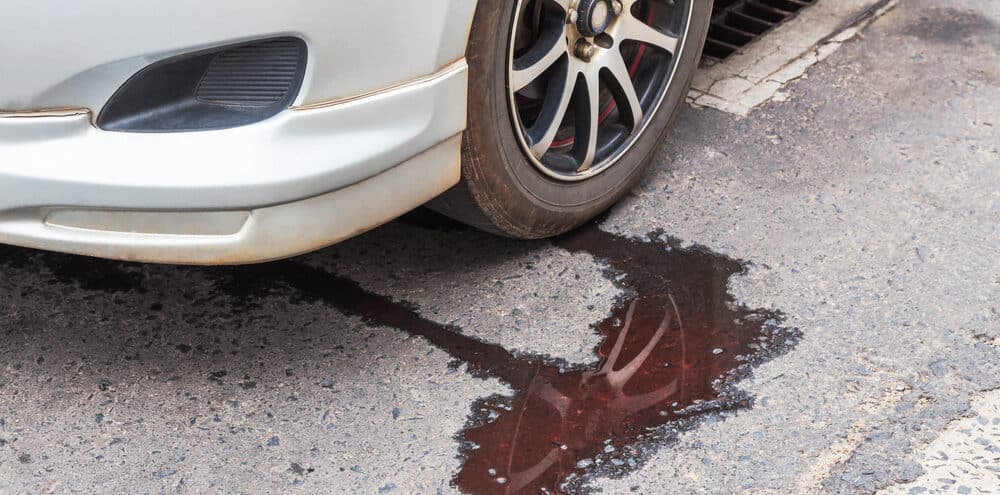
If you have a leaking intake manifold gasket, there are a few ways the coolant can go. First, it can go into the combustion chamber, which is how you get excessive smoke, or it can mix with the oil, which is how you can get coolant in the oil reservoir. It can also run off the side of the exterior of the intake manifold.
If this is the case, you might have excessive smoke coming off the top of your engine if the coolant burns off before it reaches the ground. Or, you might have a visible coolant leak on the ground underneath your vehicle. Either way, if you trace the leak back to the intake manifold, you’ve found your problem.
5. Overheating Engine

The three most prominent symptoms of a leaking intake manifold involve leaking coolant. Since it’s the coolant’s job to keep your engine from overheating, it’s not surprising that if it’s not working correctly, you can get an engine that overheats.
This won’t happen immediately, and it usually occurs once the system runs low on coolant. But if you have an overheating engine and can’t figure out where the coolant is going, there’s a good chance that it might be coming from a leak in the intake manifold.
Intake Manifold Gasket Function
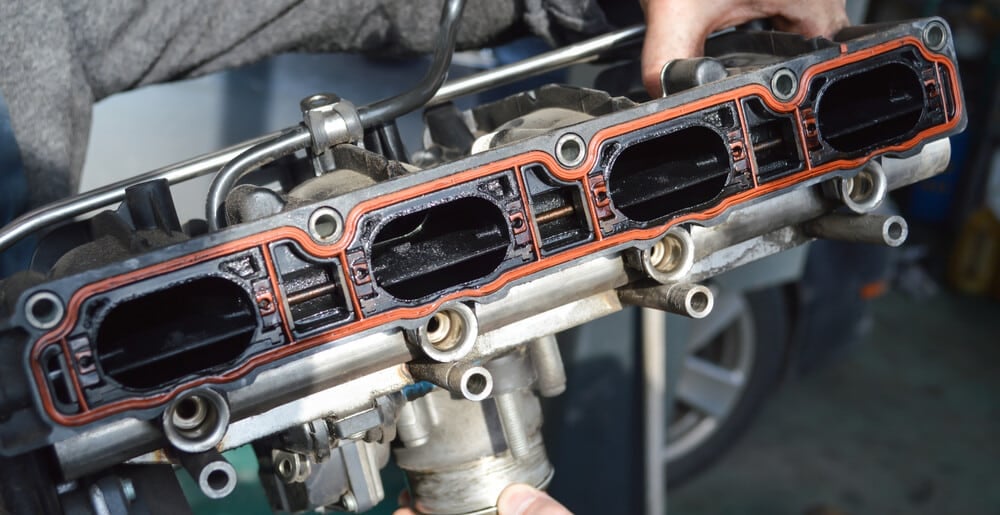
The intake manifold’s function is to direct the correct fluids, gasses, and engine necessities to the correct location throughout the engine. The intake manifold gasket assists with this by eliminating any potential escape routes for these fluids or gasses.
The intake manifold gasket forms seals around each of the passages in the intake manifold, keeping everything where it’s supposed to be. It might not sound that complicated, and it’s not, but that doesn’t make it any less important.
Intake Manifold Gasket Location
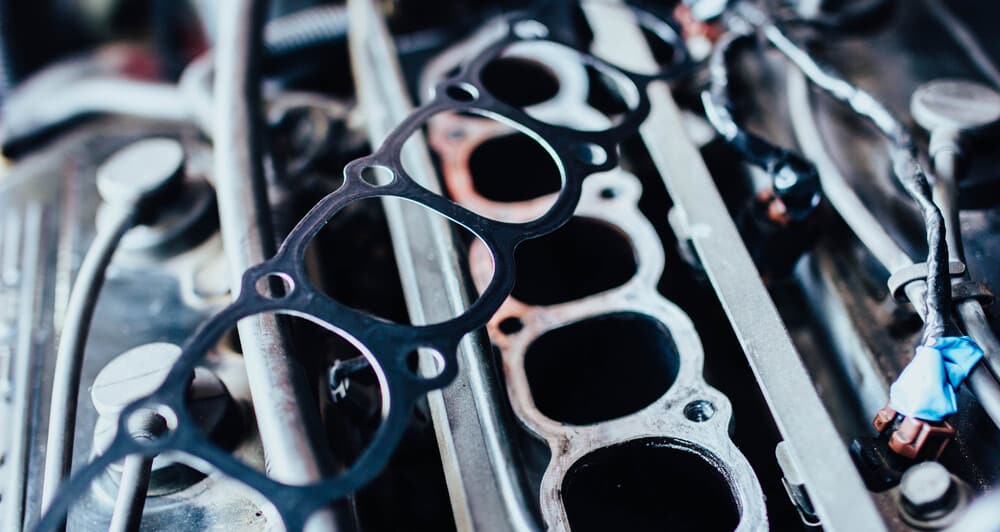
Your vehicle’s intake manifold gasket is located near your engine’s head between the intake manifold and the cylinder head. On V-shaped engines, it usually sits between both headers. For inline engines, it usually sits off one of the sides.
Reaching your intake manifold usually isn’t too complicated, but there can be many electrical components sitting on top. Not only can this make it hard to access the intake manifold, but it can make it harder to see, too.
Intake Manifold Gasket Replacement Cost
The average intake manifold gasket replacement cost is between $80 and $400, depending on the car model and labor costs. An intake manifold gasket costs $30 to $100 and labor costs $50 to $300.
The intake manifold gasket itself is often quite cheap, but most of the replacement cost comes from labor costs. This is because you have to remove the whole intake manifold to reach the gasket.
Sometimes the intake manifold cracks, causing it to leak near the gasket, and in this case, you can expect a cost of $200 to $800 for a new intake manifold.
Is it safe to drive with a bad intake manifold gasket?
No. Driving with a bad intake manifold gasket can actually cause damage to your engine cylinders or other internal engine parts, depending on how large the leak is. Even if there is only a small leak, it is not good for your engine, so it is best to fix it as soon as possible.
How do I know if my intake or head gasket is leaking?
The intake manifold gasket and head gasket serve two completely different purposes, so you’ll see different symptoms depending on which one is leaking. If your intake manifold is leaking, you will most likely notice performance issues, but if you see oil in the coolant reservoir or white smoke from the exhaust, it could be a blown head gasket.
How long does it take to replace the intake manifold gasket?
The replacement time for an intake manifold gasket depends entirely on the car and engine model. In some cars, you can replace the intake manifold gasket in under 30 minutes, while in others, it can take several hours.
How do I know if my intake manifold gasket is leaking?
The easiest way to know if your intake manifold is leaking is to spray some starter fluid or brake clean around the intake manifold gasket while the engine is running. If the engine speed increases, there is most likely a leak in the intake manifold gasket or an intake hose.
Categories: Engine
